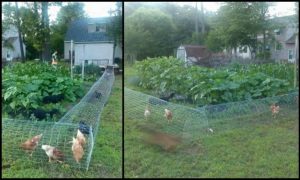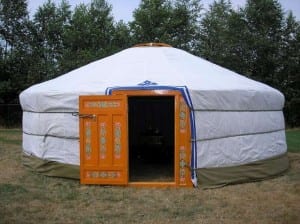Last Updated on November 13, 2024 by teamobn
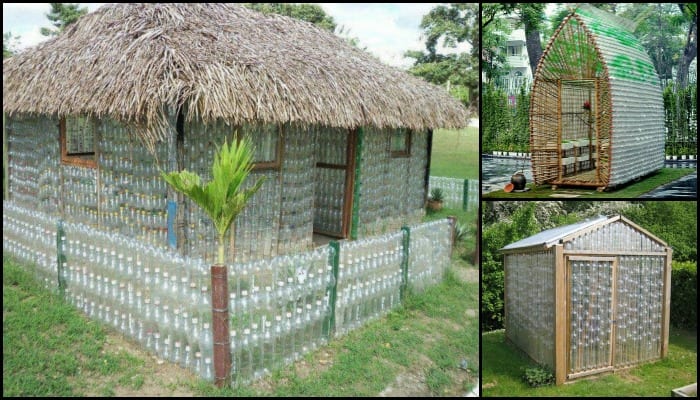
Are you looking for a way to have a small greenhouse in your yard to grow some veggies? Then why not try using plastic bottles to build one? Building your greenhouse from plastic bottles is a great way to recycle and repurpose material that would otherwise end up in a landfill.
Not only is this a great way to be more eco-friendly, but it can also save money on purchasing a traditional greenhouse or greenhouse materials. This project will teach you how to upcycle plastic bottles into something useful for growing food in your garden. This can be a fun project for the whole family.
Plus, it’s a great way to get started with gardening and learn about how plants grow. Not only are you keeping construction expenses to a minimum, but you are also helping save the environment.
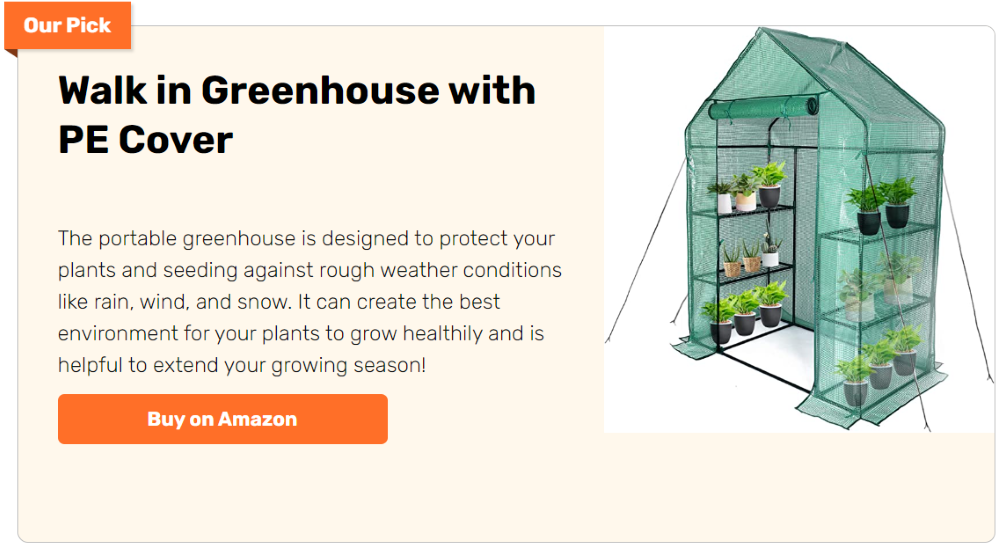
To build a large-sized plastic bottle greenhouse, you’ll need around 1,500 pieces of 2-litre plastic bottles. Can you imagine how much waste you’re already keeping away from nature with just a single greenhouse project? Not to mention, you’ll be doing your part to combat climate change.
Building a plastic bottle greenhouse is a great way to reduce your carbon footprint and help the environment. And you’ll get to enjoy fresh fruits and vegetables year-round. So, what are you waiting for? Start your project today! It indeed is a great recycling idea for plastic bottles!
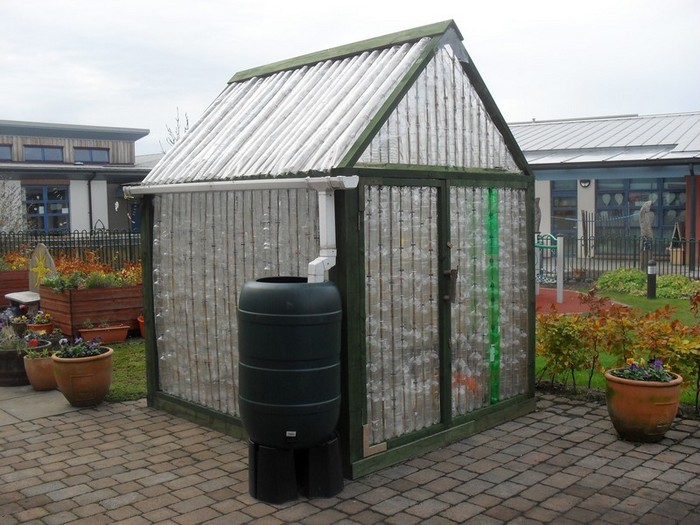
Now it might not look like a robust and effective structure to some, but many DIY-ers have already built their plastic bottle greenhouse. Despite its humble appearance, a plastic bottle greenhouse can be a surprisingly solid and effective structure, as many DIY-ers have already discovered.
And still, this project is continually being shared by different people and organizations in their community. Now that’s a good sign that this idea works in many places worldwide!
If you think this greenhouse idea is perfect for you, then it’s time to collect all those plastic bottles that you will need. 
Contents [show]
Advantages of DIY Plastic Bottle Greenhouse
Creating a DIY plastic bottle greenhouse offers several advantages, making it a popular choice for eco-conscious gardeners and enthusiasts. Here are six key benefits:
1. Cost-Effective: Building a greenhouse from recycled plastic bottles is an incredibly budget-friendly option. Plastic bottles are readily available and often free, making them an inexpensive alternative to traditional greenhouse materials like glass or polycarbonate panels.
2. Environmentally Friendly: Repurposing plastic bottles for a greenhouse offers a significant environmental benefit by reducing waste and lessening the impact of discarded plastics. Instead of adding to landfills or polluting oceans, repurposing materials for DIY projects like a greenhouse promotes sustainability and eco-friendly practices.
This approach not only helps to minimize the carbon footprint associated with plastic production but also encourages individuals to take an active role in reducing environmental harm through creative and resourceful solutions.
3. Customizable Design: DIY plastic bottle greenhouses provide versatility in design, enabling builders to tailor the size, shape, and layout to their unique needs and preferences. Whether you’re working with limited space or aiming to accommodate a sizable garden, the greenhouse can be adjusted accordingly.
This flexibility allows for creative expression and ensures that the structure complements its surroundings while effectively fulfilling its intended purpose. With the ability to customize every aspect of the design, builders can create a greenhouse that reflects their style and maximizes functionality for optimal plant growth.
4. Energy Efficiency: Energy Efficiency: Plastic bottles utilized in greenhouse construction serve as effective insulating panels, adept at trapping heat and establishing a cozy microclimate conducive to plant growth. Their innate insulating properties enable them to regulate temperature fluctuations efficiently.
Consequently, less external heating is required, especially in cooler seasons, resulting in significant energy conservation. By harnessing this natural insulation, DIY plastic bottle greenhouses offer an environmentally friendly solution that minimizes energy consumption and promotes sustainable gardening practices.
5. UV Protection: UV Protection: Numerous plastic bottles exhibit UV-resistant properties, effectively safeguarding plants against harmful ultraviolet radiation. This UV resistance serves as a protective barrier, shielding plants from potential sun damage and preventing premature degradation of greenhouse components.
By mitigating the effects of UV exposure, DIY plastic bottle greenhouses ensure the longevity of the structure while safeguarding the health and vitality of cultivated plants.
6. Educational Opportunity: Building a plastic bottle greenhouse offers an educational experience for individuals of all ages. It provides an opportunity to learn about sustainability, recycling, and gardening practices while actively engaging in a hands-on project. Schools, community groups, and families can use the greenhouse as a teaching tool to promote environmental awareness and foster a deeper connection with nature.
DIY plastic bottle greenhouses combine affordability, sustainability, and creativity, making them a practical and eco-friendly solution for cultivating plants while minimizing environmental impact.
How to Make a Plastic Bottle Greenhouse
The materials you’ll need:
- 1,500 Plastic Bottles (ideally 2-litre bottles)
- 4 x 4″ treated Posts
- 2 x 2″ treated Timber
- Garden Canes
- Cement Mix
- 4″ and 3″ Screws
- Fencing Staples
- Gravel, Slabs, Mulch Matting
- Bucket
- Soap
- Water
- Hinges
And these tools:
- Measuring Tape
- Scissors
- Trowel
- Hammer
- Cordless Drill
- Spirit Level
- Mitre Block
- Spade
- Pinch Bar
- Step Ladder
Steps to make a DIY Plastic Bottle Greenhouse:
1. Gathering Plastic Bottles
While it may take some time to gather a large number of plastic bottles, it will be well worth the effort in the end. Be sure to collect bottles that are all the same size for this project, as it will make the process much easier.
2. Clean the Plastic Bottles
To recycle plastic bottles for use in your greenhouse, you will need to clean each bottle thoroughly. This will ensure that your greenhouse is free from dirt, grime, and other contaminants that could potentially harm your plants.
You can clean the bottles by using a mild soap and water solution, or by using a commercial cleaner specifically designed for plastic. Once the bottles are clean, you can then proceed with using them in your greenhouse.

3. Build the Posts
Building the posts for your plastic bottle greenhouse is a simple process that can be completed using 4 x 4 treated lumber. The first step is to cut the lumber to the desired height, keeping in mind that the posts will need to be tall enough to support the weight of the greenhouse.
4. Make a frame for each part of the greenhouse
You should then make a frame for the door, the sides and even the roof of your plastic bottle greenhouse. This will help to support the structure and keep it from collapsing. You can use any type of material for the frame, but make sure that it is sturdy and will not rot.
5. Stacking the plastic bottles
Since you have cleaned the bottles, use a saw drill to make a hole at the bottom of each bottle. Make sure to use a saw drill with the same diameter as the garden canes, so that the canes can go through each bottle when stacking them. The garden cane will make the structure sturdy.
You can stack five (5) or more plastic bottles through the garden cane depending on your desired height for your plastic bottle greenhouse. You can also use different colours of bottles to create a more aesthetically pleasing design.
6. Assembling the parts of the plastic bottle greenhouse
To assemble your plastic bottle greenhouse, start by attaching each end of the canes to the frames of the parts you made earlier. You can do this by using fencing staples. Make sure the canes are securely fastened so that they won’t come loose over time.
Assemble the parts(the sides, the door, and the windows if you want to) to the post. Finally, put the roof on your greenhouse from plastic bottles and secure it in place. Make sure the roof is secure so that it won’t blow away.
Well, what do you think? Would you love to have your greenhouse made of plastic bottles in your backyard? If so, you can check our gallery for more inspiration. 
Click on any image to start the lightbox display. Use your Esc key to close the lightbox.![]()
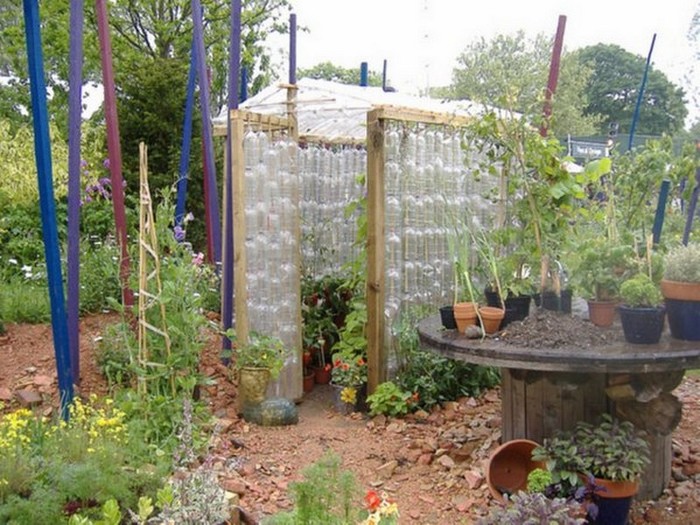
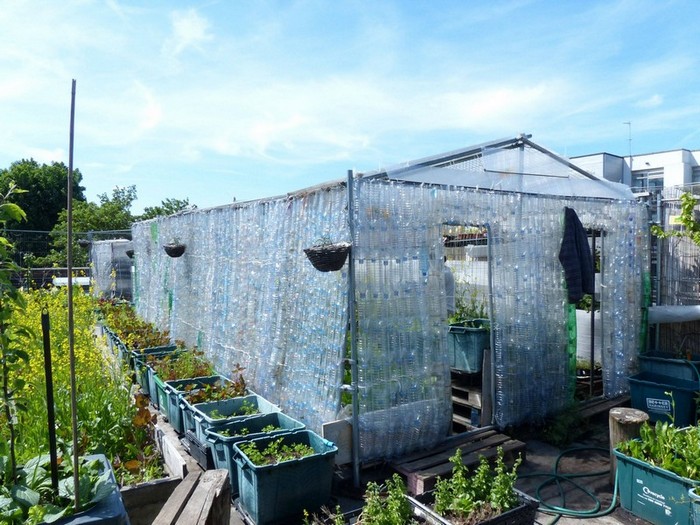
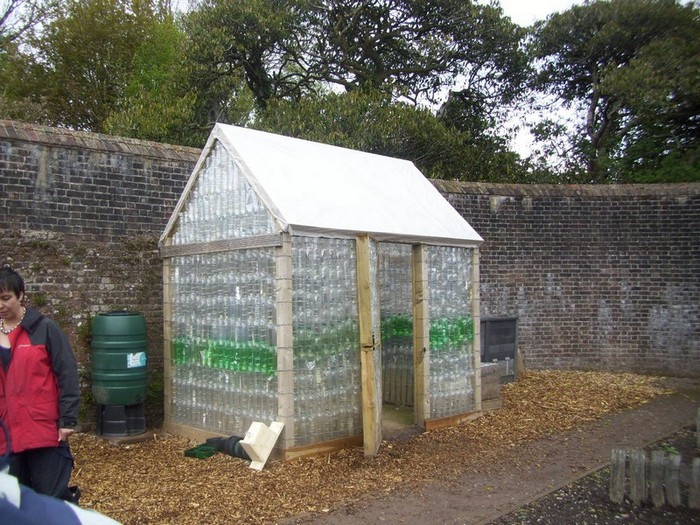
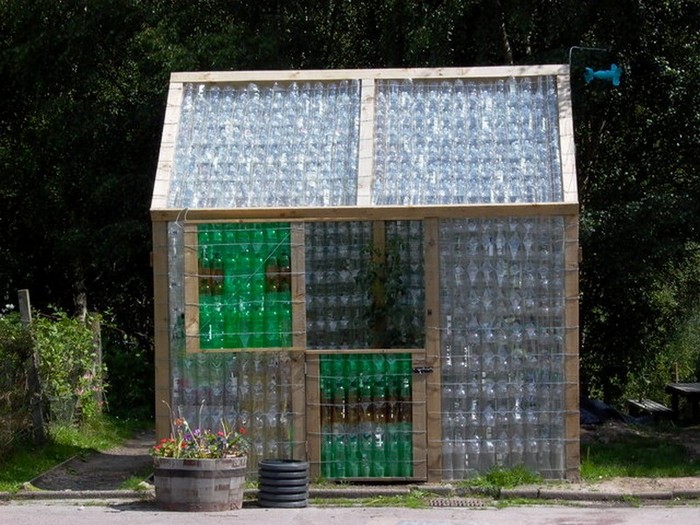
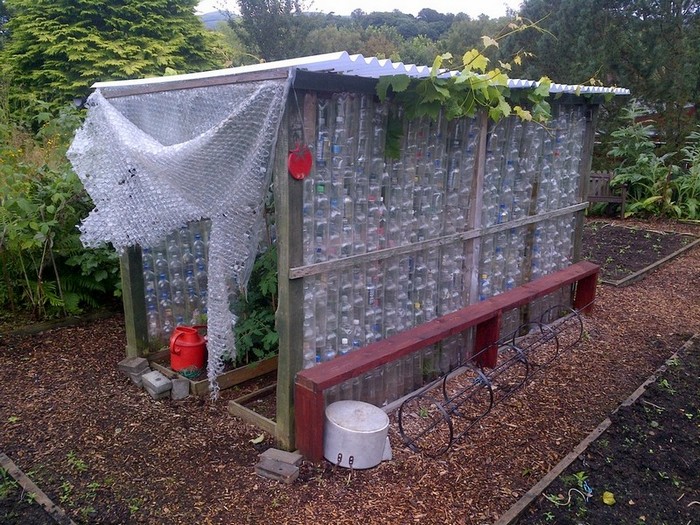
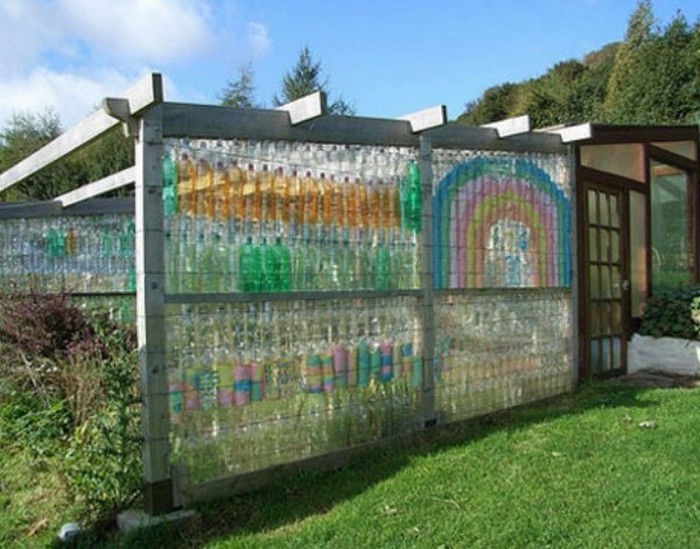
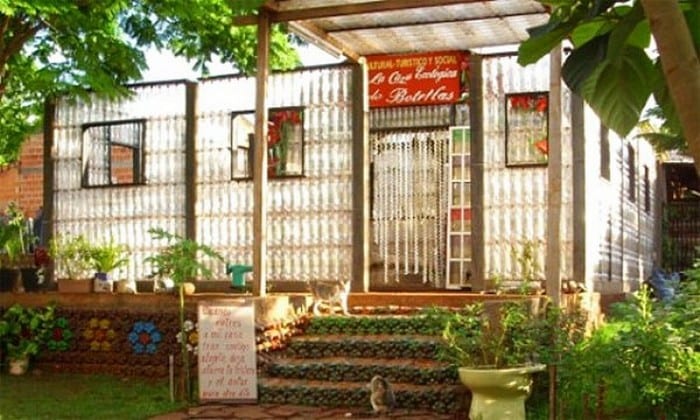

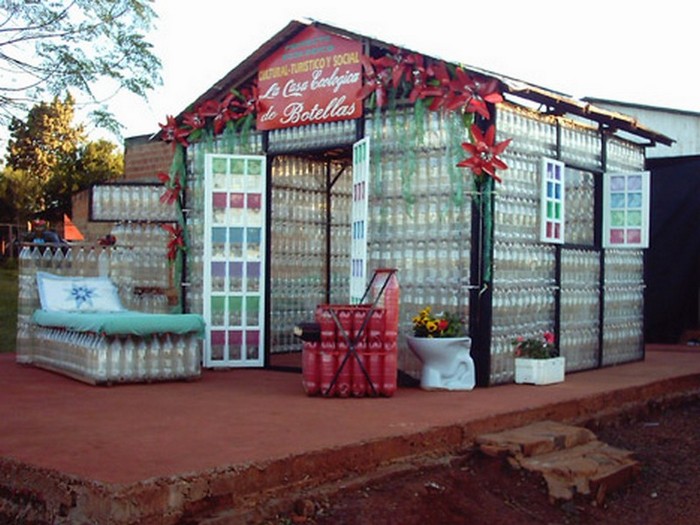
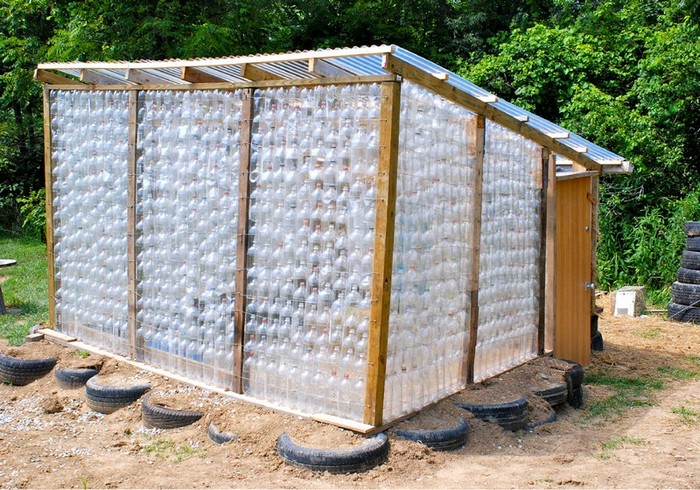

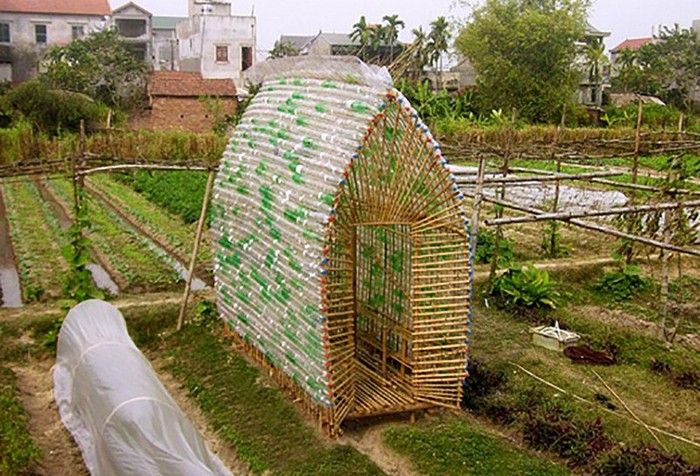
You can get step-by-step instructions from REAP over here…
Pro Tips for Your Plastic Bottle Greenhouse
Creating a DIY plastic bottle greenhouse is a fun and eco-friendly project that can be accomplished in just a few steps. Here are some tips to help you along the way:
1. Collect Sufficient Plastic Bottles: Start by collecting a large quantity of plastic bottles. You’ll need enough bottles to cover the desired surface area of your greenhouse. Consider contacting friends, family, and local businesses to gather a sufficient supply of bottles.
2. Prepare and Clean the Bottles: Before using the bottles, remove labels and caps, and rinse them thoroughly to remove any residue. Allow the bottles to dry completely before proceeding with the construction process.
3. Plan Your Design: Decide on the size and shape of your greenhouse and sketch out a basic plan. Consider factors such as available space, sunlight exposure, and accessibility. You can create a simple rectangular structure or get creative with curved or angled designs.
4. Construct the Frame: Begin by building the frame of your greenhouse using sturdy materials such as wood or PVC pipes. The frame will provide support for the plastic bottles and help anchor the structure in place. Ensure that the frame is level and securely anchored to the ground.
5. Attach the Plastic Bottles: Once the frame is in place, start attaching the plastic bottles to the frame using screws, nails, or zip ties. Arrange the bottles closely together to form a solid barrier that will help retain heat and create a greenhouse effect. Consider overlapping the bottles slightly for added stability.
6. Add Finishing Touches: Once all the bottles are attached, step back and admire your handiwork! Consider adding additional features such as doors, windows, or ventilation panels to enhance the functionality of your greenhouse. You can also decorate the exterior with paint or other embellishments to personalize the space.
By following these tips and taking your time with each step, you’ll be able to create a DIY plastic bottle greenhouse that’s both functional and visually appealing. Enjoy watching your plants thrive in their new eco-friendly home!
The Wrap Up
Building a DIY plastic bottle greenhouse in just six easy steps is a rewarding and sustainable project that anyone can undertake. By collecting plastic bottles and repurposing them into a functional greenhouse, you not only create a protective environment for your plants but also contribute to reducing plastic waste.
With careful planning, preparation, and execution, you can enjoy the benefits of growing your plants while making a positive impact on the environment. So, roll up your sleeves, gather your materials, and embark on this eco-friendly journey to create a greenhouse that’s both practical and environmentally conscious. Happy gardening!
Frequently Asked Questions
1. What are the benefits of building a plastic bottle greenhouse?
Building a plastic bottle greenhouse is a sustainable way to repurpose plastic waste while creating a protective environment for your plants. It’s cost-effective, environmentally friendly, and allows you to grow plants year-round.
2. How do you collect enough plastic bottles for the greenhouse?
You can collect plastic bottles from your household recycling, ask friends and family to save them for you or organize community bottle collection events. Consider reaching out to local businesses or schools for additional bottles.
Organize community bottle collection events to gather a large quantity of plastic bottles in a short amount of time. Publicize the event through social media, local newspapers, and community bulletin boards to maximize participation.
Contact local businesses, such as restaurants, cafes, grocery stores, and convenience stores, and ask if they’re willing to save their empty plastic bottles for your project. Offer to pick up the bottles regularly to make it convenient for them.
3. Do you need any special skills or tools to build a plastic bottle greenhouse?
No special skills are required, and basic tools like scissors, a utility knife, and adhesive are sufficient. The construction process is straightforward and suitable for DIY enthusiasts of all skill levels.
Detailed, step-by-step instructions guide you through each stage of the construction process, from preparing the plastic bottles to assembling the greenhouse structure. Clear illustrations or video tutorials may also be available to help visualize each step.
While the basic design of the greenhouse is simple, there’s ample room for creativity and personalization. You can experiment with different bottle arrangements, colours, and layouts to customize the greenhouse to your preferences.
4. Can you build a plastic bottle greenhouse in any size or shape?
Yes, one of the advantages of building a plastic bottle greenhouse is its flexibility in design. You can adjust the size, shape, and layout according to your available space and gardening needs.
Building a plastic bottle greenhouse offers a creative outlet for expressing your personal style and gardening preferences. Whether you prefer a minimalist design or a whimsical, artistic creation, the flexibility of the design allows you to tailor the greenhouse to reflect your unique taste and personality.
5. How long does it take to complete the construction of a plastic bottle greenhouse?
The construction time depends on various factors such as the size of the greenhouse, the number of helpers, and your level of experience. Generally, you can complete the greenhouse in a few days to a week.
Weather can also impact construction time, particularly if you’re working outdoors. Inclement weather such as rain or extreme temperatures may delay progress or require additional precautions to protect materials and ensure worker safety.
While the construction time for a DIY plastic bottle greenhouse may vary, careful planning, organization, and teamwork can help expedite the process and ensure successful completion within a reasonable timeframe.
5. What types of plants are suitable for growing in a plastic bottle greenhouse?
Plastic bottle greenhouses provide a suitable environment for a wide range of plants, including vegetables, herbs, flowers, and even small fruit trees. Choose plants that thrive in greenhouse conditions and consider your local climate.
6. How do you maintain and care for a plastic bottle greenhouse?
Regular maintenance involves checking for leaks, cleaning the bottles to maintain transparency, and monitoring temperature and humidity levels. Ensure proper ventilation and watering according to the needs of your plants.
7. Can you dismantle and relocate a plastic bottle greenhouse?
Yes, plastic bottle greenhouses are relatively easy to dismantle and relocate if necessary. Simply disassemble the frame and carefully remove the bottles. Reassemble the greenhouse in the new location following the same steps.
8. Are there any safety considerations when building a plastic bottle greenhouse?
Ensure proper ventilation when working with adhesives or paints, and handle sharp tools with care to prevent injuries. Keep children and pets away from the construction area and follow safety guidelines throughout the process.
9. How can you make my plastic bottle greenhouse more energy-efficient?
Consider installing passive solar heating elements or incorporating insulation materials to regulate temperature and reduce energy consumption. Additionally, using energy-efficient lighting and irrigation systems can further enhance sustainability.
10. How can you turn the mini greenhouse activity into a plant-growing experiment?
Your little greenhouse may become a plant-growing experiment using the scientific approach. Choose a research subject, such how water, light, or soil effect plant development. Set up your experiment by changing one factor (independent variable), measuring the results (dependent variable), and maintaining other circumstances. Set up and study your plants, then form conclusions and learn more about plant care.
11. What is the life cycle of a plant, and how can it be explored through activities?
Hands-on activities that combine observation and practical learning may teach the plant life cycle. To monitor germination, put seeds in a transparent container and keep a seed journal. Watch roots and shoots become seedlings, then move them to bigger places as they mature into plants with leaves, stalks, and flowers. Finally, watch mature plants develop seeds to complete the life cycle and improve your respect for nature.
12. How can you make a mini greenhouse using plastic bottles?
For a DIY plastic bottle greenhouse, gather and clean uniform-sized plastic bottles. Cut a 2-liter bottle in half, add drainage holes, and put seeds in the bottom for little greenhouses. For bigger greenhouses, create a frame with treated timber, stack bottles on garden canes, and support the weight with robust materials. Place the greenhouse in a sunny position, check moisture and plant development, and enjoy sustainable backyard plant care.


